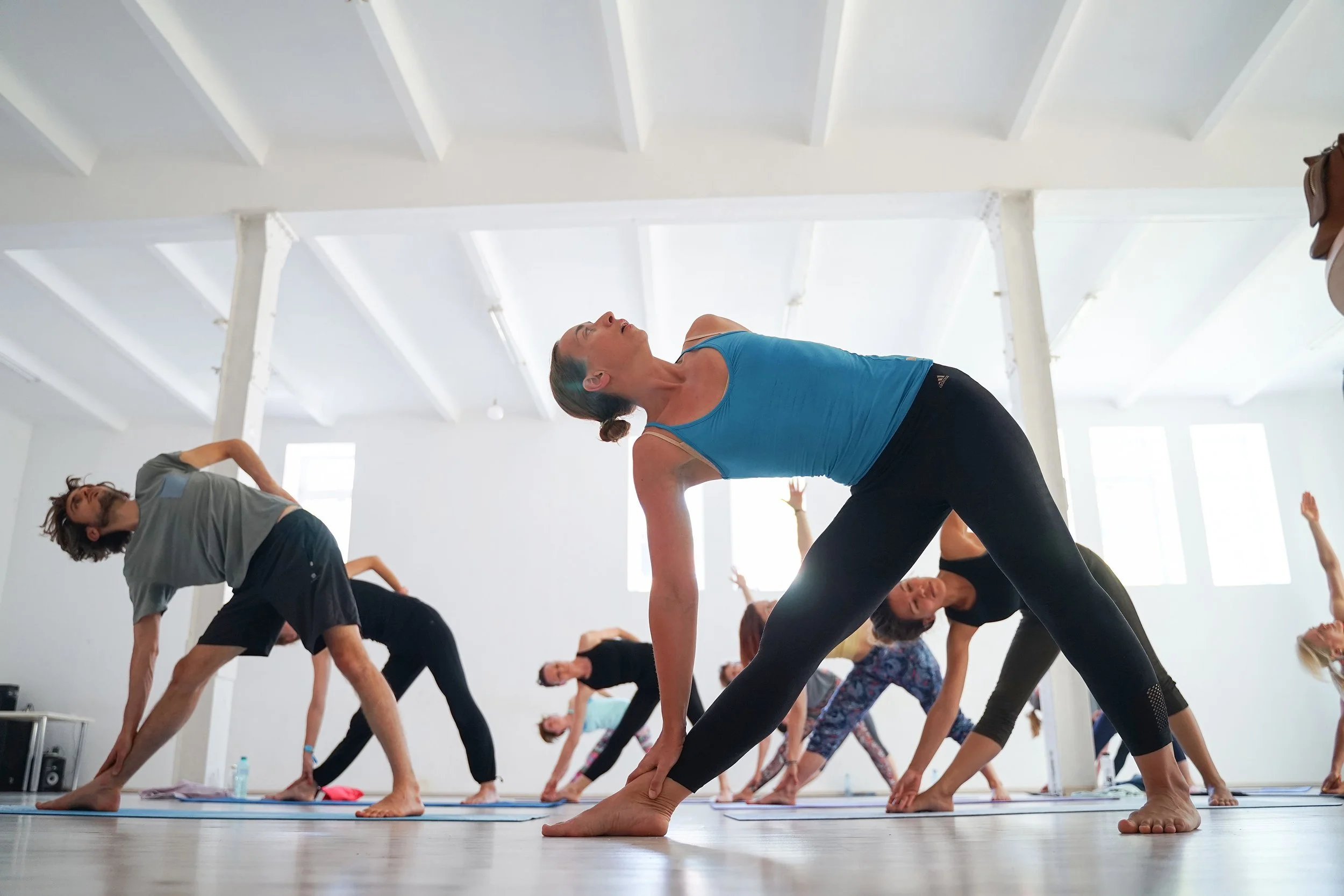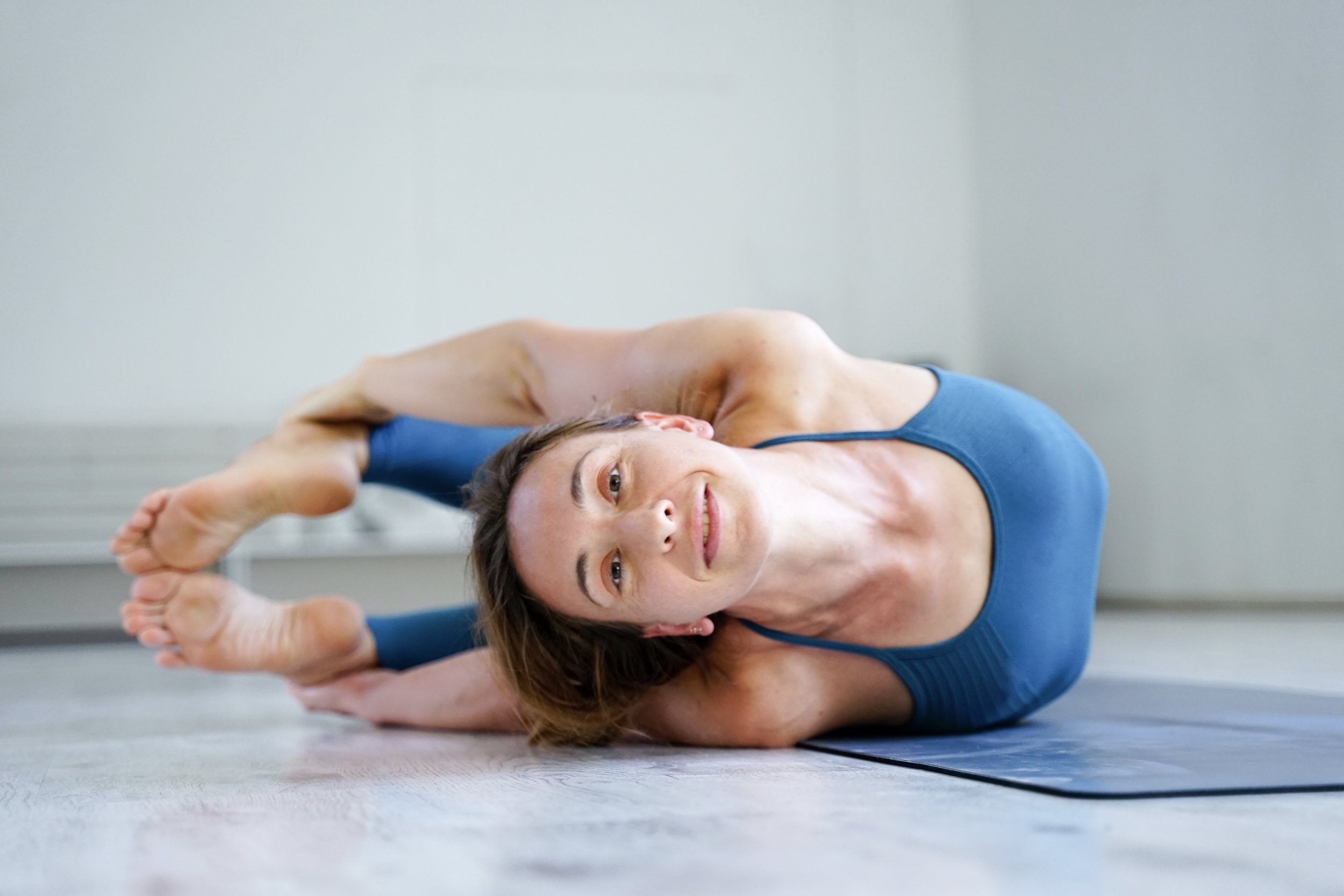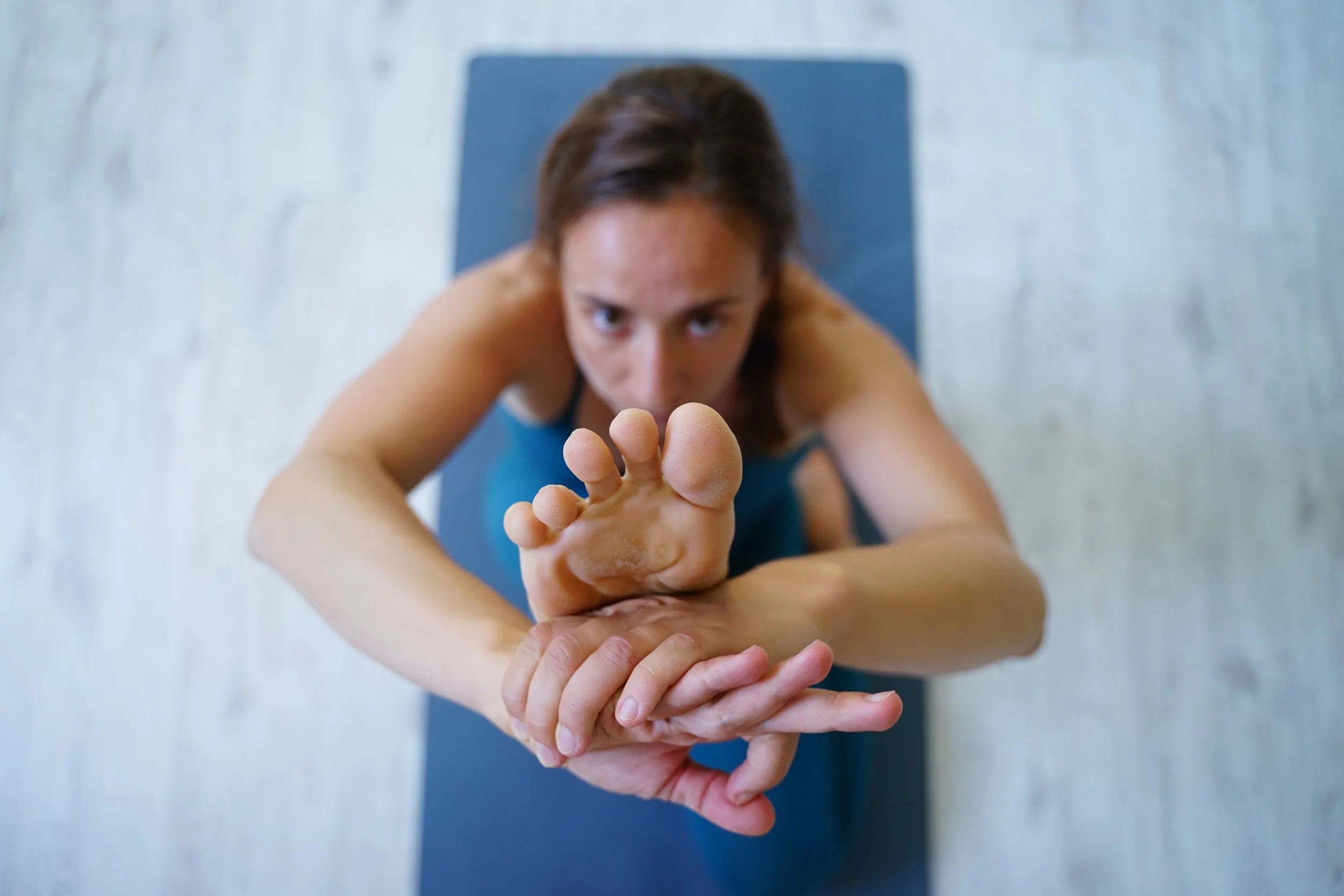What to expect
First encounter
Before entering a Mysore-style Ashtanga class, be prepared to learn the sequence gradually. The teacher will guide you through the postures, starting with sun salutations, and you can practice and learn at your own pace. You don't need to memorize the sequence beforehand; the teacher will assist you in learning it over time. The teacher will move around the room, offering individual guidance, focus on your specific needs and help you with any challenges you face.
Usually there’s quite a lot of hands-on assists but, if you are not comfortable with touch, that’s perfectly alright. Your boundaries will be respected. There are many ways of learning.
The approach is an organic and progressive type of learning. You'll gradually get familiar with the sequence, building from the sun salutations to the full primary series and much more.
Mysore Etiquette
Mysore style Ashtanga yoga etiquette emphasises a respectful and mindful approach to practice, fostering a quiet and focused environment for both individual and collective learning. That doesn't mean questions and laughter are not welcomed, on the contrary :). We just do our best to cultivate a meditative environment.
Other key principles address cleanliness and hygiene, respecting the designated time-frame. This is also made flexible and completely stress-free for the student as the arrival time, for a Mysore class, is very flexible.
It is recommended to practice on an empty stomach, avoiding eating for 3-4 hours before class. Also, avoid drinking water during practice to maintain the internal heat generated by the practice. Please DO hydrate before class :-)
Arrive within the recommended timeframe, 7:30-8:30 am. If you need to cancel the class please do so up to 12h beforehand, otherwise the session needs to be covered in full.
How frequent should I practice?
The traditional Ashtanga Yoga method recommends practicing six days a week, with the seventh day reserved for rest. However, this is not a strict rule, and many practitioners find that practicing three to five days a week is sufficient. The key is to find a schedule that works for your body and life. Regardless of the frequency, consistency is more important than intensity. Keep the joy alive!
What is the difference between a Mysore class and a guided one?
In Mysore-style Ashtanga yoga, students practice individually at their own pace, with the teacher providing one-on-one guidance as needed. In contrast, a guided Ashtanga class, often called "led" class, is a more structured class where all students move in unison through a set sequence of postures, following the teacher's verbal cues.
While a Mysore-style is a great way for beginners to learn the Ashtanga sequence and for experienced practitioners to deepen their practice, accommodating all levels of practitioners, full primary led classes are designated for experienced practitioners, who are already familiar with the sequence. Guided classes though can be tailored to be safe and supportive environment for new students. Guided classes are also particularly helpful for learning the specific count and flow of the vinyasa between postures.
Type of classes
-

Guided classes
In the Ashtanga Yoga tradition, during a guided class students come together as One in body, breath and mind through the beauty and flow of a Sanskrit counted Primary Series. When we focus on counting the Mala of the postures, the practice becomes the object of meditation for the student and the teacher - creating one single intention.
-
Mysore classes
In a Mysore Style class students do their own practice while being offered individual guidance to further deepen their experience and understanding. You work closely with your teacher to develop your practice and allow your personal process to unfold. How far you go in the sequence is particular to your body, and the pace is determined by your breathing pattern. You are required to memorise the sequence and, over time, postures are added according to your constitution, readiness and ability.
In a Mysore room we have all levels of practitioner – a yoga teacher next to someone who is just beginning, or someone recovering from an injury and another who may be pregnant… This creates a deeply compassionate space where all bodies and abilities can be held, nourished and developed individually together. It is a personal practice done in a group setting.
It is only by self-practice that we dive deeper into the system of Ashtanga Yoga. By learning to listen to, and move in synchronicity with our own breath, we refine our proprioceptive and interoceptive awareness. This brings about a fully embodied sense of being which is essential for healing and wholeness. It is a way of practising that creates independence for the student, and allows space to listen internally rather than following the voice of a teacher, or the pace of a group-class. Having our own practice is an invaluable gift that allows us to plant ourselves directly into the ground of our lived experience every morning as we step onto our yoga mat.
-

Private classes
This class consists of the same principles as the Mysore/Assisted self-practice with the only exception that the student and the teacher are the only one in the room. Students may opt for this type of framework when the curiosity of a deeper understanding can not be satisfied during a group setting, when they need to revisit the foundational part of the practice or simply to build it from the ground up. We all need more attention and care occasionally, in a private and safe space.
-

Community classes
Community oriented classes are occasional, free, focusing on a wide range of topics from Yoga to Feldenkrais, or any other complementary practices or any other interests the community might have an interest to.
These meetings are community oriented. We chose to spend time together, support and share our interests with each other.
-

Workshops
A workshop is a longer, specialised event that dives deeper into a specific topic, offering a blend of theory and practice, and interactive learning, to provide a more in-depth and balanced experience than a standard yoga class.
Workshops offer a chance to go beyond the surface-level information of a regular class and develop a more profound understanding of what yoga is, deepen and expand perception, explore new areas like anatomy, philosophy, pranayama, alignment techniques, sequencing, hands-on assists and many other complementary methods and fields that have the potential to improve one’s practice.
-

Pranayama, Meditation, Yoga philosophy
Description goes here
